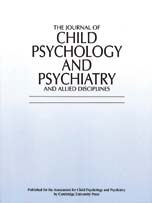No CrossRef data available.
Abstract
There has been a consensus that children “in care” show a much increased frequency of behavioural difficulties but the reasons why this should be so are much less well understood. The study by Roy et al. sheds important new light on this issue. They found that children admitted into residential group homes as babies are much more likely than children admitted into foster care at the same age to show hyperactivity and inattention. Although the study sample was small, the groups were closely comparable in coming from a very high-risk family background. The evidence from both questionnaire and observational measures was consistent in indicating that the difference in the pattern of rearing made a substantial difference to the child's behaviour. The findings are sobering in their implication that the pattern of care provided to protect children at high risk seemed to have acted in a detrimental manner. The study clearly provides food for thought in terms of the need to improve provision for this vulnerable group of children. The findings are also provocative in their implication that hyperactivity/inattention, although strongly influenced by the child's biology, can also be affected by the pattern of rearing. The message is that clinicians should not assume that the causes of this hyperactive behaviour necessarily reside entirely within the child but there is also the need to clarify whether the form of hyperactivity/inattention arising from these experiences is in someway atypical.
The paper by Reynolds and colleagues is an attempt to evaluate the efficacy of emotional disclosure to offset distress in children experiencing negative life events. There is a developing literature on such interventions in adults but, as these authors suggest, little work has yet been done to test the value of such disclosure in children. Using a randomised controlled trial Reynolds et al. were unable to show a specific benefit from the opportunity provided to write about negative events. Rather, there was a general reduction in symptoms from all groups. Although the results suggest that the efficacy of writing about negative events is less marked in 8–13-year-olds than in adults, they also indicate that it is both feasible and potentially valuable to give children opportunities to engage in discussion about sources of stress and their reaction to them.
- Type
- Editorial
- Information
- The Journal of Child Psychology and Psychiatry and Allied Disciplines , Volume 41 , Issue 2 , February 2000 , pp. 137 - 138
- Copyright
- © 2000 Association for Child Psychology and Psychiatry


